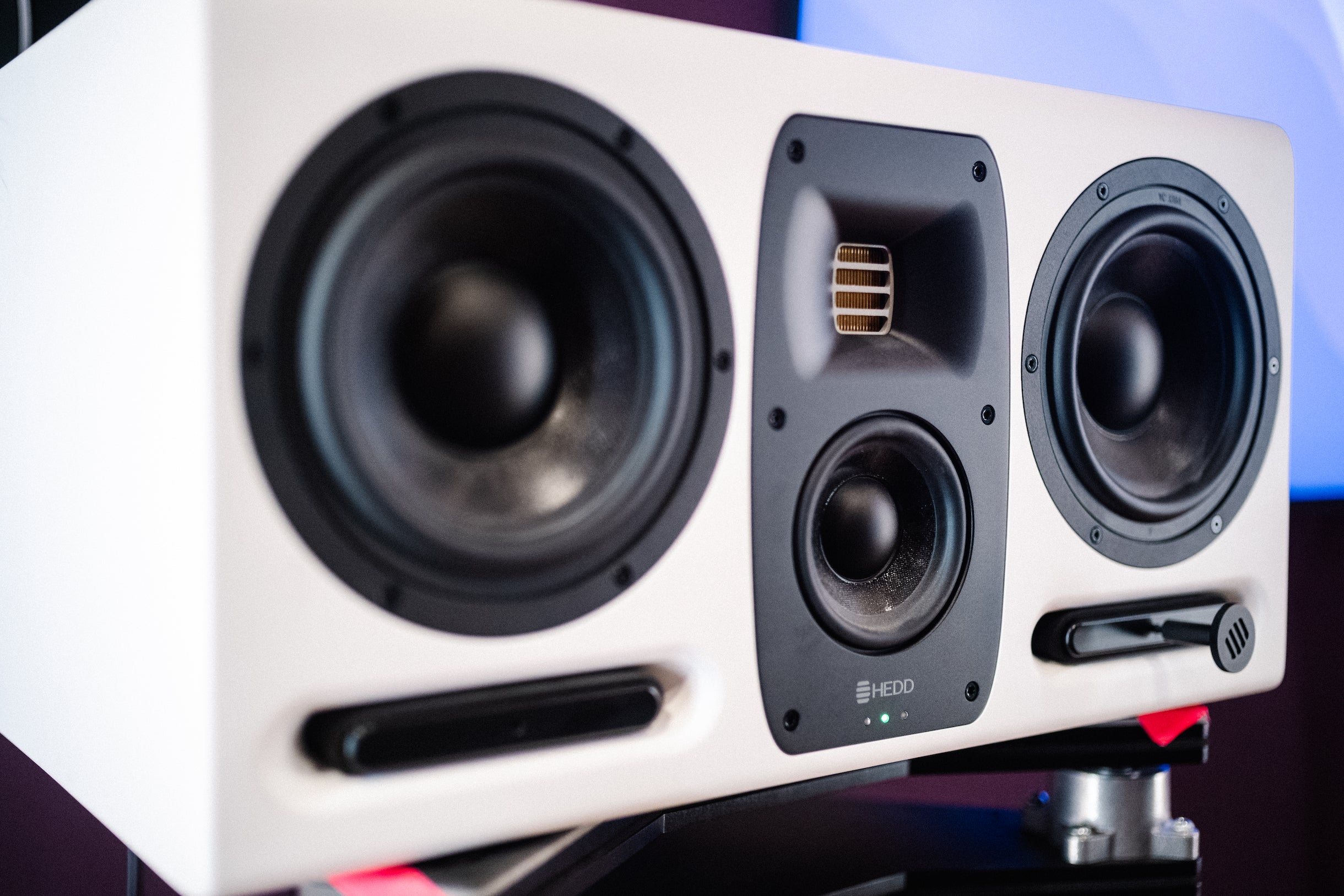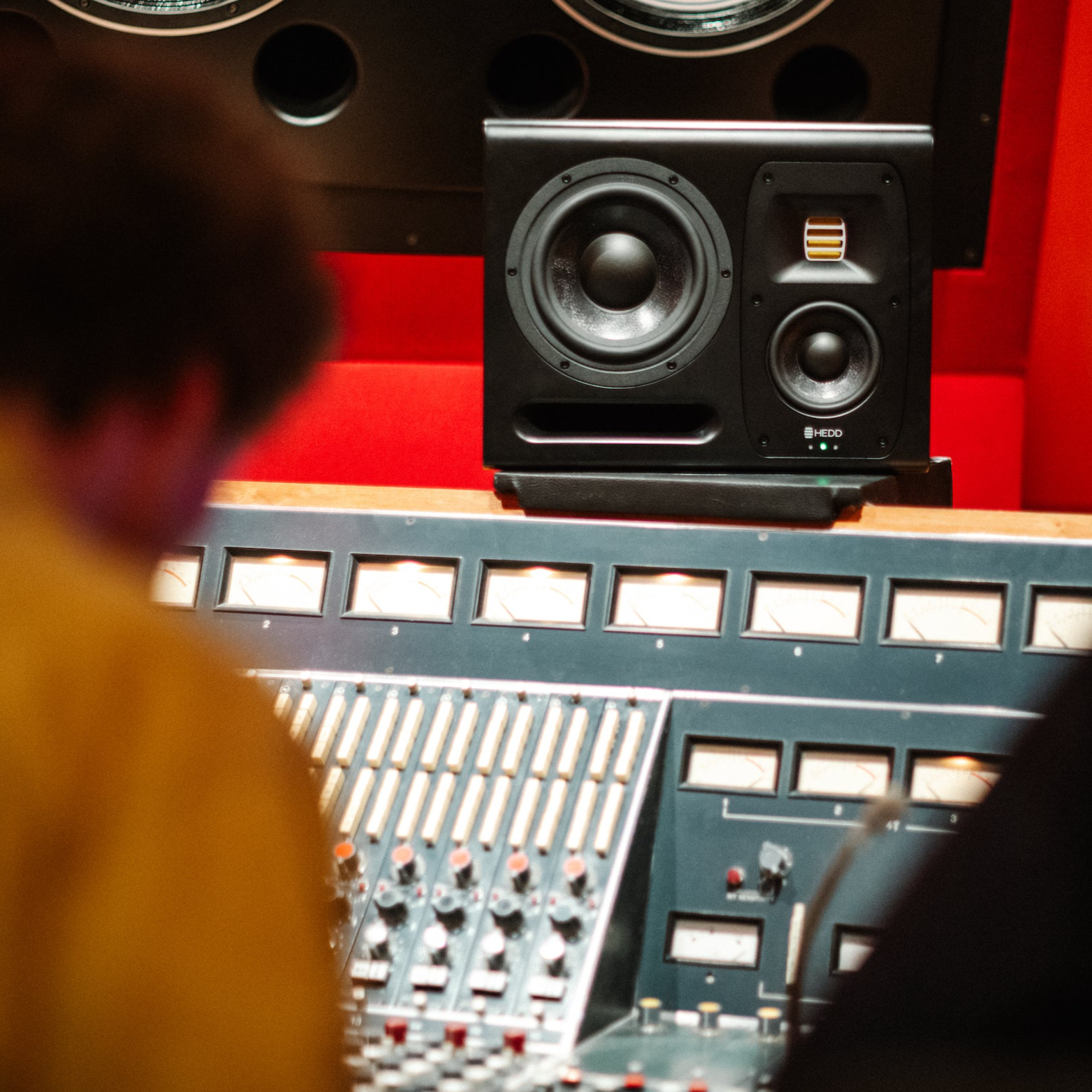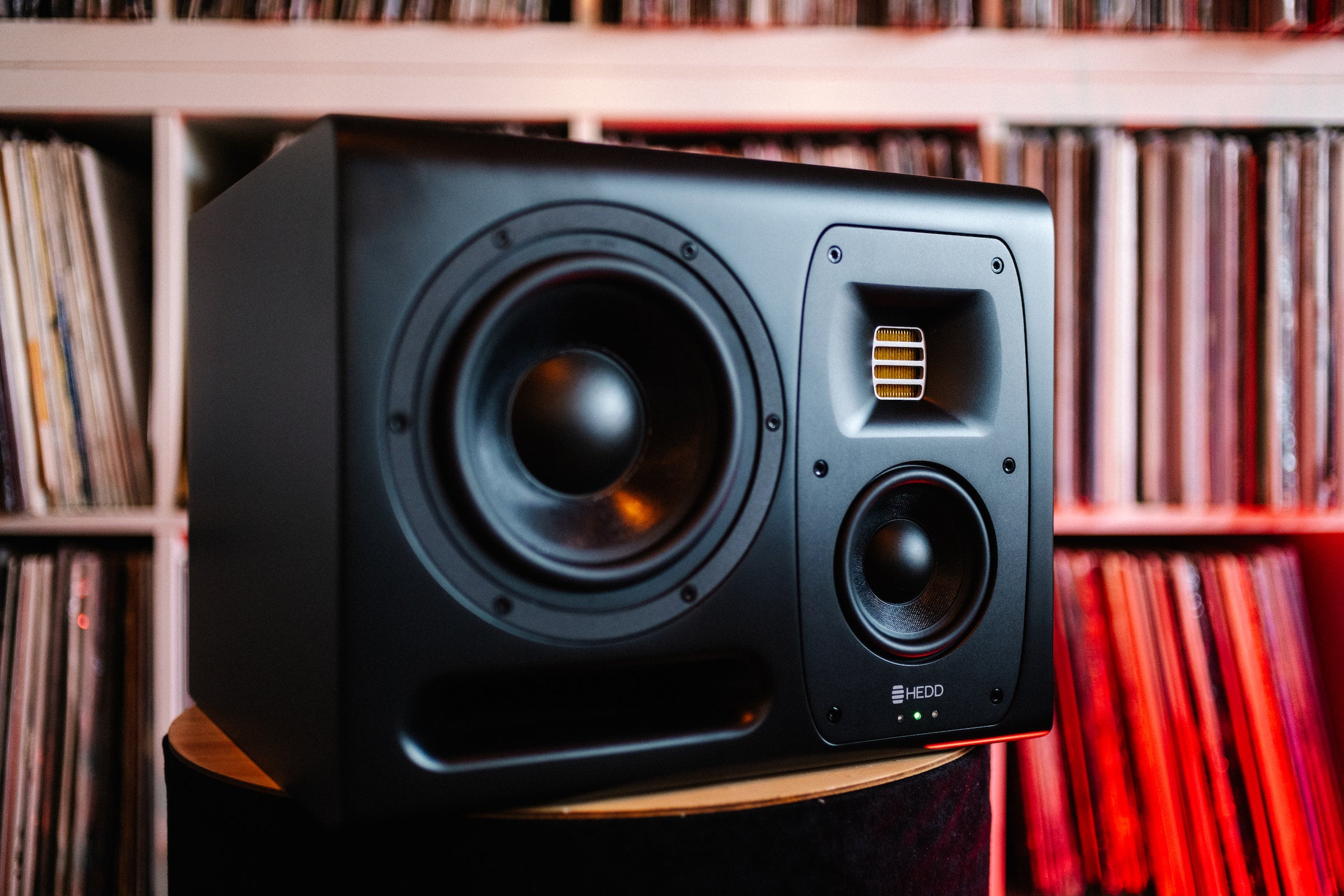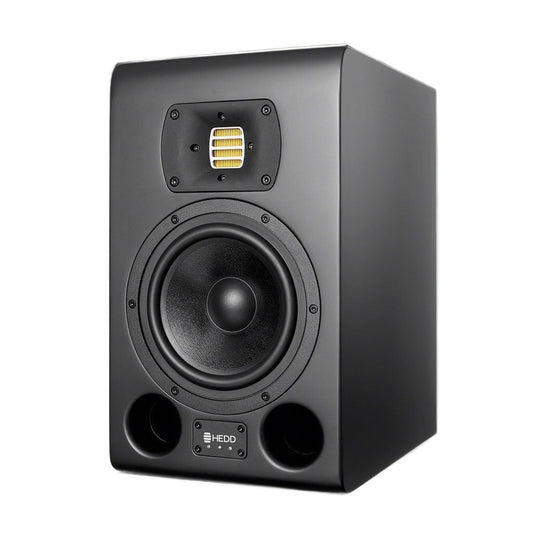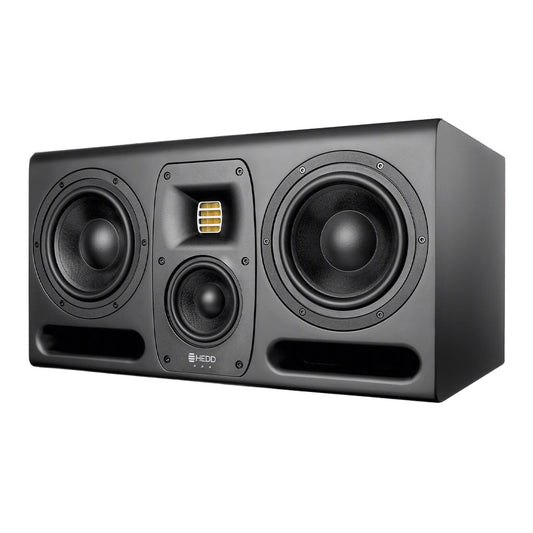Closed or Ported: What the Plug?
Another major innovation of the HEDD MK2 range is Closed or Ported (CoP) functionality, giving you the best of two monitoring systems in each speaker.
All MK2 monitors can easily be switched between a closed or ported cabinet, with each option providing its own benefits depending on your needs: With the vented bass reflex tubes open, Ported Mode lets you feel the music with powerful bass, increased headroom, and maximised loudness; By sealing the cabinet with a custom plug, Closed Mode lets you uncover more sonic details with greater precision, transient response and texture resolution.
Combined with the Lineariser, AMT driver, and additional DSP controls, Closed or Ported enhances the flexibility of our MK2 monitors so that they can be used across a wide range of audio needs.

"We use all 15 HEDD speakers in our Atmos setup in closed mode. The sonic response is super tight and reliable to the lowest register."
Friedemann Tischmeyer
— Mastering Academy, Hamburg
The Two Types of Monitor Cabinets
Speaker cabinets mainly come in two flavors: a closed box, sometimes called an infinity baffle, or an open box, meaning that a bass reflex or port is left open within the design. There are variations of both design types, but the vast majority of commercial speakers can be described by one of these two types.
Ported (or open) speakers take the sound from the rear side of the woofer diaphragm to increase the efficiency of the system to reach either lower frequencies or higher sound pressure levels. This comes at the cost of irregularities in the bass up to midrange frequencies, originating from additional nonlinear sound emanating from the tubes. An ideal impulse response is not possible with open designs, and good approximations of precise low-end reproduction are possible though not always implemented. Ultimately, ported designs are used in a majority of professional and hi-fi speakers because they can sound appealing and impressive.
Closed boxes, for their part, have the advantage of being able to deliver a theoretically perfect impulse response for low frequencies. The sound output can be well calculated and consequently digital filters can be correctly applied to the output. The price paid is that only 50% of the acoustical output reaches the listener, with the remaining 50% emanating from the backside of the diaphragm disappearing in the damped volume of the cabinet. As a consequence the lower corner of the frequency response (the so-called -3 dB point) is more difficult to reach and the maximum sound pressure level is ~6 dB lower.
The Best of Both Worlds
The idea of enabling both closed and ported modes in a single cabinet design came to the HEDD R&D team during the development of our Tower Mains system, a favourite of recording and mastering studios.
We wanted the Tower Mains to incorporate the main advantage of a closed system without limiting sound pressure levels or low end reach. Our goal was to bring the system down to 20 Hz (-3 dB) and therefore enable the full listening spectrum whilst getting it precise and really loud. To do this we combined four excellent long throw subwoofers in a robust cabinet with four individual chambers, and added the best high-power amplifier we could find.
The sonic results were so convincing that we felt the need to offer comparable experiences to all potential studio monitor customers, even if that meant a somewhat lesser maximum sound pressure level. By implementing separate signal paths for the two different modes we wanted to give users the choice to have different sonic experiences that suited their particular working style or music.
Making CoP Work
To achieve optimal reproduction quality for closed or ported operation we chose to combine removable POM plugs for the ports and switchable, specific signal paths to filter the monitors accordingly.
We designed our own foam plugs that hermetically seal the ports and can be removed with a knurled screw. On the back panel of the monitors there is a rotary "CoP" switch to set the electronic filters to either "CLOSED" or "PORTED".er Mains to incorporate the main advantage of a closed system without limiting sound pressure levels or low end reach. Our goal was to bring the system down to 20 Hz (-3 dB) and therefore enable the full listening spectrum whilst getting it precise and really loud. To do this we combined four excellent long throw subwoofers in a robust cabinet with four individual chambers, and added the best high-power amplifier we could find.
The sonic results were so convincing that we felt the need to offer comparable experiences to all potential studio monitor customers, even if that meant a somewhat lesser maximum sound pressure level. By implementing separate signal paths for the two different modes we wanted to give users the choice to have different sonic experiences that suited their particular working style or music.

